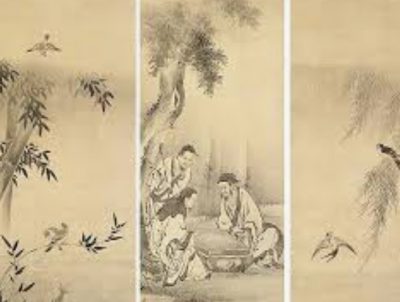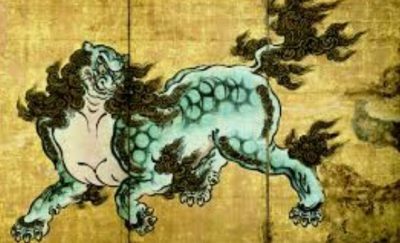Kano Sanraku (1559-1635) and art of Japan: The world of power concentration
Lee Jay Walker
Modern Tokyo Times

Kano Sanraku (1559-1635) belongs to a time of major change in Japanese society. Hence, he witnessed the power processes of centralization under several warlords. This culminated with the emergence of the Tokugawa Period that lasted from 1603 to 1868. Therefore, the power of feudal lords, processes of centralization, conflict, and other forces related to power concentration, were part of the world that Sanraku belonged to.
In his early life, the warlord Oda Nobunaga shaped a society based on success on the battlefield. Naturally, for the inquisitive Nobunaga, this enabled him to modernize and implement economic reforms – while respecting high culture and the world of art. Indeed, the flow of Christianity emerged during the leadership of Nobunaga but in time the Tokugawa Period would crush this faith. However, for Sanraku, the unifiers of Nobunaga, Toyotomi Hideyoshi, and Tokugawa Ieyasu had a different angle and this relates to sponsoring art and various aspects of Japanese high culture.

The linkage of art and culture is visible by solely focusing on Kano Eitoku (1543-1590) because his patrons included Nobunaga and Hideyoshi. Equally important, in relation to Eitoku, this admirable artist of great esteem was impressed by Sanraku during his informative years. Therefore, with the Kano School being involved in the political intrigues of the day – even if from a different nuance – the development of Sanraku was bound to shine once Eitoku valued his art.

In a past article, I comment, “Another powerful patron of Sanraku was Tokugawa Hidetada, the second shogun of the Tokugawa period. In saying this, the shadow and dominance of Tokugawa Ieyasu remained until he passed away from this world in 1616. Hence, the powerful patrons of Sanraku highlight the rich cultural continuity of the pre-Tokugawa era and the unification period.”

Overall, the bright style of color during the Momoyama Period remained in the heart of Sanraku. Also, just like the esteemed Eitoku, the artist Sanraku maintained the significance of the Kano School of Art in this period of Japanese history. Hence, while Sanraku belongs to the period of history that witnessed military and political convulsions, he equally belongs to the world of high culture. After all, notable warlords valued art and other aspects of high culture during the lifetime of the esteemed Sanraku.

Modern Tokyo News is part of the Modern Tokyo Times group
DONATIONS to SUPPORT MODERN TOKYO TIMES – please pay PayPal and DONATE to sawakoart@gmail.com
http://moderntokyotimes.com Modern Tokyo Times – International News and Japan News
http://sawakoart.com – Sawako Utsumi personal website and Modern Tokyo Times artist
https://moderntokyonews.com Modern Tokyo News – Tokyo News and International News
PLEASE JOIN ON FACEBOOK
https://www.facebook.com/moderntokyotimes
PLEASE JOIN ON TWITTER
https://twitter.com/MTT_News Modern Tokyo Times